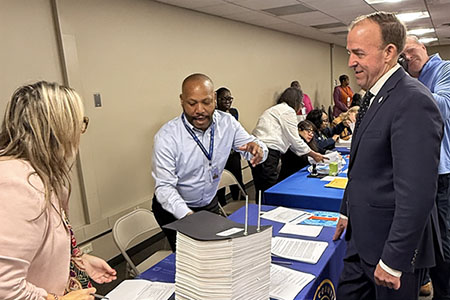Two years after a prolific downtown thief was caught, card skimming is still a threat to consumers. Chicago police have fresh advice for how to avoid being the one out of four Americans victimized by card skimming.
May 16, 2020 – When Jenni paid for her medication at the Walgreens at the corner of Michigan Avenue & Washington Street in the Loop, she did not expect that the transaction would cost her more than a few dollars. Half an hour later, she got a notice that her card had been used 22 miles away in Hinsdale, a place she had never been. She soon discovered she had been a victim of ATM skimming. Jenni says she immediately notified her bank, which cancelled the card and issued a new one, “which was great.” Unfortunately, before the card was shut down, she had $230 taken from her account that she would not get back because, she says, her bank ruled “that since whoever had the card had my PIN, it was just a case of someone having access to my PIN and it was apparently my issue for not securing my PIN.”
Card skimming has become a threat to consumers in recent years. In 2019, Comparecards.com reported that nearly one out of four Americans has been a victim of card skimming. It is a form of credit/debit card fraud in which thieves install a device, often in ATMs but in other locations where people swipe or insert cards. The devices intercept account information encoded in the magnetic strip of a credit or debit card. Some fraudsters use cameras to record fingers as they type PINs. The data is collected and used to extract cash from the compromised accounts.
While most people associate the practice with ATMs, card skimming is happening more often at non-bank locations. T.J. Horan, vice president of product management for FICO and head of its fraud solutions business unit, said in a 2016 New York Times interview that 60 percent of skimming incidents were at non-bank ATMs. Banks often have cameras that can monitor their ATMs for misuse, but grocery stores, pharmacies, and gas stations are more common locations for cards to be skimmed.
Police encourage ATM users to inspect the machine first, looking for any irregularities or loose parts. The card reader slot and PIN pad should not wiggle or have extra pieces visible. Nothing should move or pop off. If you believe you are the victim of skimming or identity theft, immediately contact your financial institution and, if necessary, file a police report. In late 2017 and early 2018, Chicago police found dozens of ATM skimmers across the North Side and downtown, including three Walgreens locations – 410 North Michigan Avenue, 151 North State Street, and 79 West Monroe Street.
More resources:
|







 Previous story:
Previous story: 








